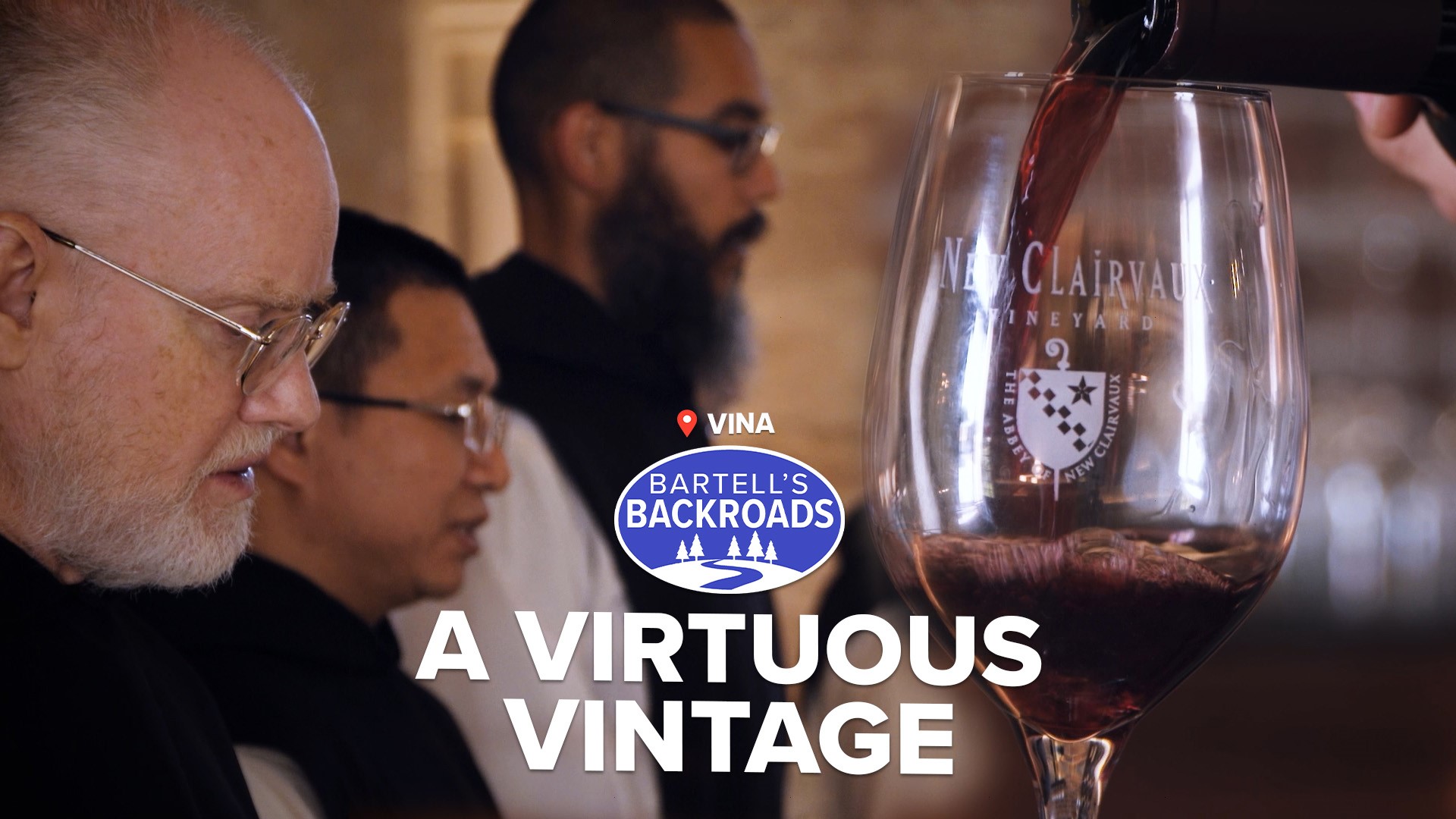VINA, Calif — Echoes of monastic chants bounce off the walls at New Clairvaux Abbey seven times a day. The harmonic hymns are sung by Cistercian monks, a French Roman Catholic order dating back to the year 1098 AD.
The Cistercian way of life is strongly cenobitic, which means each monk searches for God individually. Brothers here don't hold services, teach or do parish work. They seek God and they work. Historically, work for Cistercian monks involves making wine.
“They were making wines regarded as the best in the world in the 12th and 13th centuries, reserved for kings and popes,” said vineyard manager Brother Luis Cortez.
There are about 15 Cistercian monasteries in the United States. One of them is at the southeastern edge of Tehama County in the little railroad town of Vina.
“Around the railroad they saw that there were vines so they named the town Vina,” said Brother Luis.
Brother Luis says the vineyard's rich history predates him by more than a century. Some of the first vines were planted by California trailblazer Peter Lassen and then later developed by former governor and rail baron Leland Stanford.
“He had 4,000 acres here at the Grape Vina Ranch and that was the largest vineyard in the entire world, so we have a very important in the history of viticulture in the U.S. and you might say in the world," he said.
Today, the vineyard is much smaller, but the monks still grow grapes fit for nobles. Brother Luis points to the Tempranillo as an example.
“This here is our Tempranillo, the noble grape from Spain," he said while holding a handful of the purple fruit. "Something that a lot of people don’t know is that this grape, Tempranillo, made its American debut here at Vina during the Stanford era.”
► See an interactive map of everywhere John has visited on the backroads
► Watch all of the Backroads videos
► Follow John on Facebook
The Cistercians took over a small portion of the Vina property in 1955. Among the original group was Father Thomas Davis, who was a monk sent over from a monastery in Kentucky.
“Each person here believes that God has called him or her to this way of life,” said Father Thomas.
At first, the monks grew prunes and milked cows. Father Thomas helped turn the property back into a vineyard.
“You can’t go wrong with a good glass of wine,” he said.
The monks pick and process the grapes, but winemaker Aimée Sunseri brings out the taste. Her blends have won multiple awards.
Sure, the grapes that go into the wine have a lot of historic significance, but nowhere near the historic significance of the 800-year-old hand-chiseled stones that make up the abbey. Each one was removed from a gothic style Cistercian monastery in Spain, only to end up in California after an odd turn of events.
“William Randolph Hearst brought over parts of this monastery,” said Father Thomas.
The stones were originally destined to be part of media mogul William Randolph Hearst's mansion. He spent millions of dollars to deconstruct the monastery in Spain and ship it to the U.S.
“Due to various circumstances, especially the Depression, he was unable to follow through on his plans,” said Father Thomas.
The dismantled monastery sat in a San Francisco warehouse long after Hearst's death in 1951. Father Thomas spent more than 40 years petitioning to get the stones delivered to Vina and they were in 1994. These days, the stones resemble a giant puzzle.
"It is a mix of four different buildings. Originally there were 10,000 stones that William Randolph Hearst purchased and had shipped over to the United States,” said Brother Luis.
Reconstructing the monastery became Father Thomas' life work. With nothing but old pictures and a lot of prayers, he and a staff of builders pieced together one of the four historic monastery buildings.
“It took us over 25 years to complete one of the buildings. We are going to rest a little bit,” said Brother Luis.
Today, that building is enjoyed by the monks and anyone who wants to attend any one of the seven daily prayers.
The abbey will be helping Father Thomas celebrate his 90th birthday Nov. 11 with a benefit dinner in Sacramento, and it's a pretty safe bet they'll be serving wine.
MORE LIQUID REFRESHMENT FROM THE BACKROADS: The Pulgas water temple--a monument to one of California's most valuable resources and the brilliant way it's delivered to a thirsty city of millions.



















